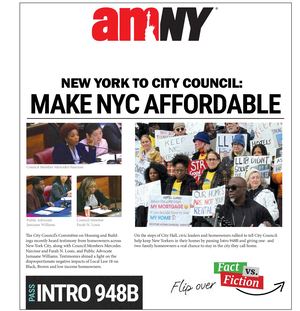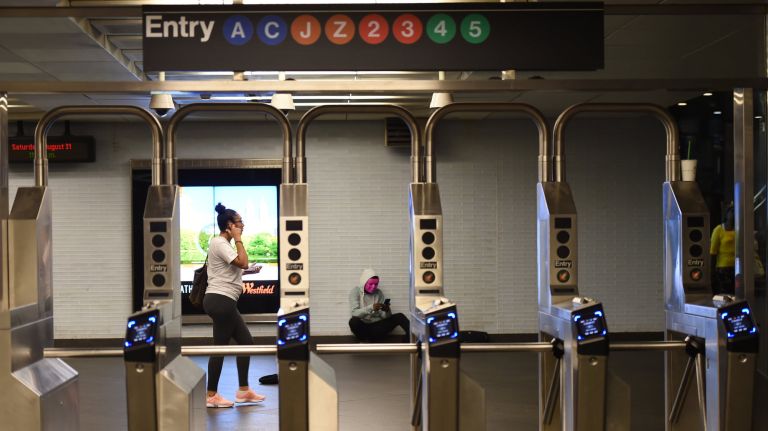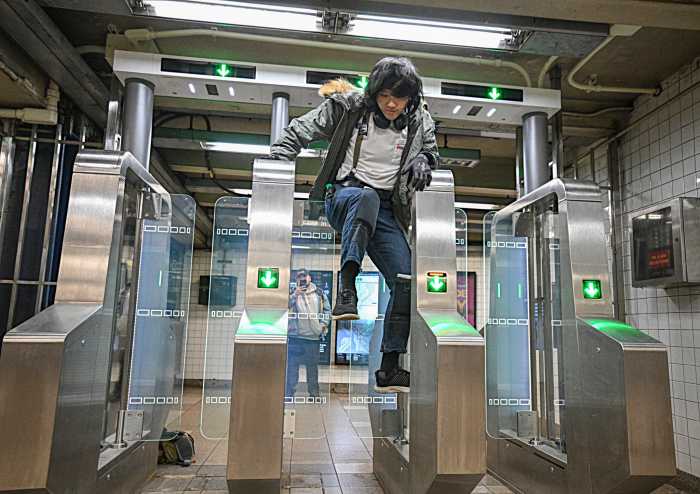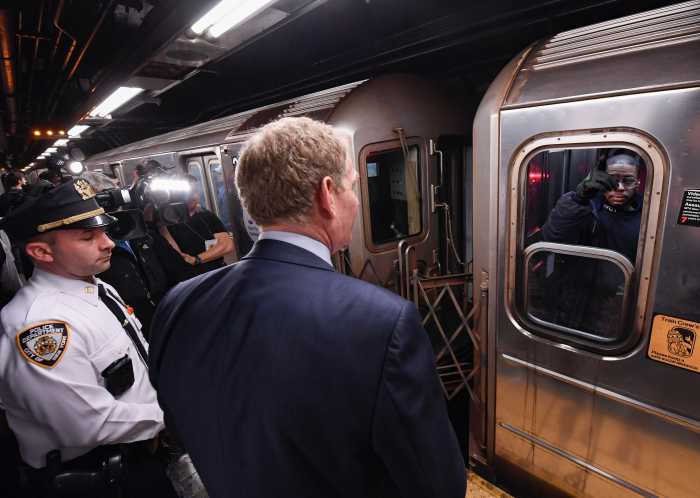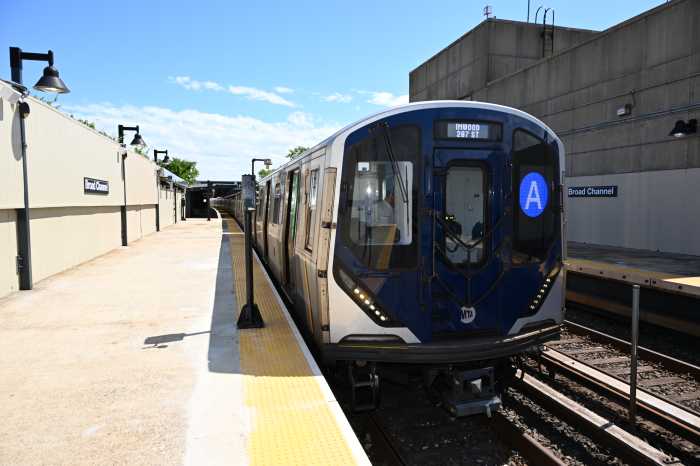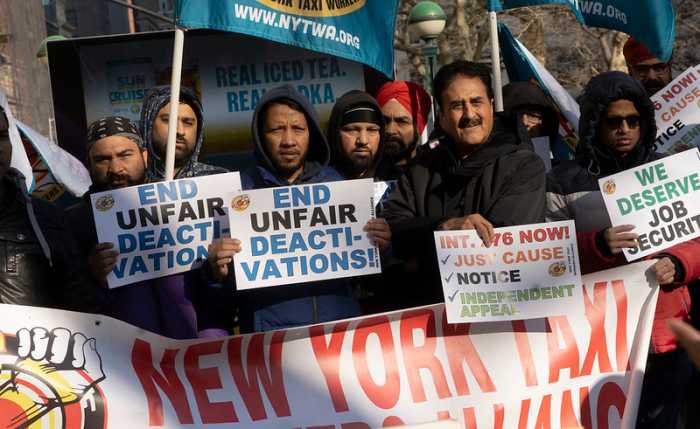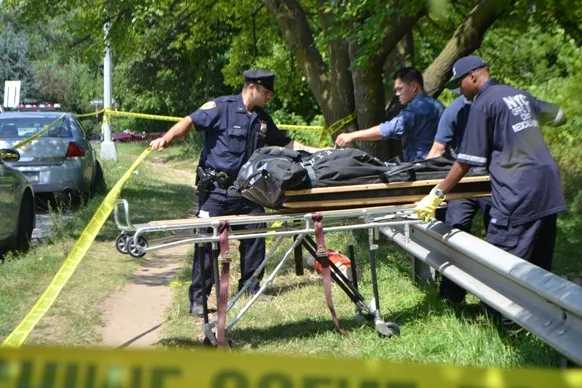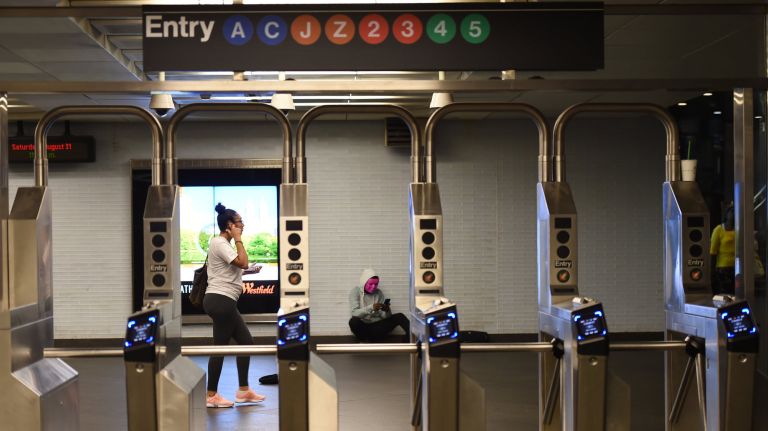
The MTA’s tracking of fare evasion — one of its key priorities — is full of flaws, according to the transit authority’s inspector general.
After bus and subway ridership tanked and fare revenue fell, the MTA over the last year began more aggressively harping on what it has described as a concerning spike in fare evasion. The concern led to a marked influx of cops deployed within the system and a new MTA ad campaign urging riders to pay their way.
The cash-strapped MTA has estimated it lost $215 million to fare evasion last year, but a review released Thursday from MTA Inspector General Carolyn Pokorny’s office questioned the accuracy of that figure. Her team raised doubts that the authority properly tracked instances of the crime.
“Accurate and reliable data is the foundation of the MTA’s critical efforts to prevent fare evasion,” Pokorny said in a statement, noting that the MTA has adjusted its data collection tactics since the period studied. “This review, and the steps taken by [New York City Transit] over the past months to improve their method of calculating the impact of fare evasion, are part of a larger initiative to crack down on those who ride our transit system without paying and collect this lost revenue so it can be invested in improving and strengthening the MTA.”
The MTA each quarter sends small teams to survey buses and subway stations for fare evaders. The teams are supposed to check 280 individual turnstile banks in subway stations and ride more than 100 bus routes. Observations made during those surveys are then projected system wide.
However, the MTA survey teams were not fulfilling the full scope of what they were asked to study, according to Pokorny’s office, which reviewed six quarterly fare-evasion reports from mid-2017 to the end of last year. Due to the small number of employees tasked with doing surveys and rigid scheduling, the MTA on average pulled from a little more than half — 60% — of the 280 subway turnstile banks it set out to monitor.
The subway surveyors are required to wear uniforms, while those examining buses are not. The MTA does not have a manual to guide survey checkers, raising questions about biases and uniformity.
MTA officials have argued that the flaws and limitations of the survey mean the authority is likely undercounting fare beating. Pokorny’s office, however, said that is not clear.
"We can’t say definitively that previous estimates underestimated the level of fare evasion,” said Danielle Blustein Hass, a spokeswoman for the IG, in an email. “Just that the estimates aren’t accurate, so we aren’t sure of the true rate of fare evasion.”
MTA Transit President Andy Byford said at an unrelated news conference Thursday that the authority has acted on recommendations from Pokorny’s office.
“We’ve said for months now this is an issue that we can’t ignore,” said Byford. “Every dollar that doesn’t come to us, in terms of fares that should be paid, is a dollar that we can’t improve in service.”
Transit advocates and civil rights groups have lambasted the MTA for assigning more cops to deal with fare evasion and homeless people in the subway system. Turnstile policing data reliably show that people of color make up the overwhelming majority of those arrested for the offense.
“Homelessness will not be solved by increasing the number of police officers who patrol our subway stations,” said Michael Sisitzky, the lead policy council at the New York Civil Liberties Union.
“While every New Yorker should feel safe when riding public transit, this proposal is clearly a guise to aggressively police low-income and homeless New Yorkers,” Sisitzky continued. “The city would be better served diverting resources toward solutions that would address poverty, not criminalize it.”
